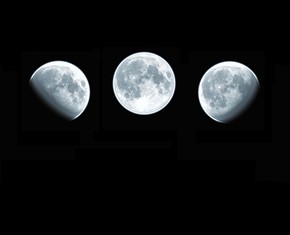The views expressed in our content reflect individual perspectives and do not represent the authoritative views of the Baha'i Faith.
Have you ever looked down into a well and seen your reflection in the water below? Have you ever thought of a well as a symbol of the spirit?
One of the many symbolic motifs from Abraham’s life that has been repeated in subsequent revelations is that of the imagery of wells. Abraham was the first messenger of God recorded as having dug a well. The wells he excavated to physically water his flocks of sheep simultaneously served as symbols of divine blessings and eternal life for his flock of believers. Abraham was also the first messenger of God described as having had his wells filled in with rubble by neighboring tribes who did not want to drink from them. After Abraham died, Isaac dug the wells again and released fresh water, indicating that the spiritual processes set in motion by Abraham could not be permanently blocked.
This scenario of releasing fresh water from wells has been repeated in all of the Abrahamic religions. Each messenger has found that the “wells” of perception opened by previous revelators have become filled with the “sludge” of misunderstanding, opposition, disobedience, and superstition. After removing the sludge, each of them has provided a fresh source of sparkling water for anyone willing to partake.
Moses, for example, gathered his congregation together near a dry rock and “with his rod he smote the rock twice: and the water came out abundantly, and the congregation drank, and their beasts also.” – Numbers 20:11. Jesus offered “a well of water springing up into everlasting life.” – John 4:11. For Muhammad, the symbolism of wells became quite literal when his grandfather presaged Muhammad’s revelation by rediscovering the well of ZamZam, whose location had been lost, and clearing away the sand so water could again flow forth. The Bab described the water He was offering in mystical terms:
I give you to drink, by the leave of God, the sovereign Truth, of the crystal-pure waters of His revelation which are gushing out from the incorruptible Fountain situate upon the Holy Mount. – Selections from the Writings of the Bab, p. 50.
Baha’u’llah enjoined those who seek knowledge to “drink your fill from the wellspring of wisdom.” (Tablets of Baha’u’llah, p. 212.)
Monotheism
By smashing idols and speaking of a God Who was both invisible and indivisible, Abraham opened a new area of spiritual reality for humankind to investigate: monotheism.
In spite of Abraham’s foundation, however, when Moses began his ministry, he had to again explain and reinforce the idea of monotheism among people who were still thinking in very literal terms and retained a strong desire to worship solid idols. To get his point across, Moses used concrete idioms, describing god as a consuming fire Who was so jealous that He could be provoked to anger by anyone who dared carve an idol.
More than a thousand years later, Jesus, speaking to people whose worldview was significantly different than that of the tribes who had lived during the time of Moses, was able to expand man’s appreciation of the transcendence of God by portraying Him in ways that were less concrete and more ethereal. He spoke of God as a mystery and explained that “God is light, and in him is no darkness at all.” – 1 John 1:5. Because Moses had already firmly implanted the concept of justice in Judaism, Jesus was able to spend more time emphasizing God’s love, including the way in which it could be reflected by the human soul: “God is love; and he that dwelleth in love dwelleth in God, and God in him.” – John 4:16. And, as mentioned previously, Jesus also taught the world an incredible lesson about the nature of self-sacrifice.
Muhammad’s challenge was that of spiritualizing a group of brutal desert tribes who “battled and pillaged mercilessly” and were willing to bury extra baby girls alive in the desert rather than bear the expense of feeding them. So although Muhammad did speak of God as merciful, compassionate, and forgiving, he—like Moses—had to spend much of his time stressing the sterner aspects of the one Creator. “Whoso is an enemy to God,” said Muhammad, “shall have God as his enemy.” – Qur’an 2:92.
Baha’u’llah, speaking nearly two thousand years after Jesus and fourteen hundred years after Muhammad, validated all of the previous images by describing both fear and love as essential qualities of a faithful soul:
Their hearts are illumined with the light of the fear of god, and adorned with the adornment of His love. – Baha’u’llah, Epistle to the Son of the Wolf, p. 122.
Then Baha’u’llah added one more perplexing layer to the conundrum that is God by emphasizing His complete transcendence:
To every discerning and illumined heart it is evident that god, the unknowable essence, the divine Being, is immensely exalted beyond every human attribute, such as corporeal existence, ascent and descent, egress and regress. Far be it from His glory that human tongue should adequately recount His praise, or that human heart comprehend His fathomless mystery. He is and hath ever been veiled in the ancient eternity of His essence, and will remain in His reality everlastingly hidden from the sight of men. – The Book of Certitude, p. 98.
You May Also Like
Comments

















sequence of prophets and their methods of enlightening us!